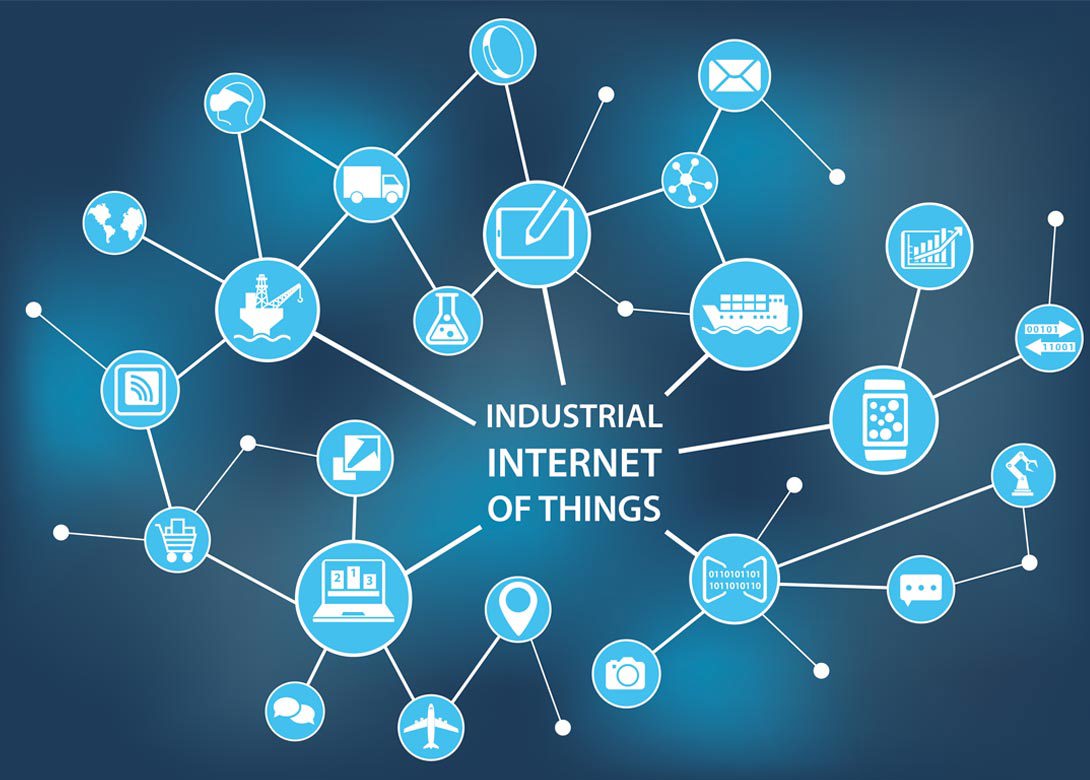
The Industrial Internet of Things (IIoT) is poised to have a transformative impact on the manufacturing model of the future, drastically improving the accuracy of KPI tracking and business intelligence, as well as increasing safety for human workers. How can businesses reap the benefits of this new trend, and how will ERP make it a reality?
What is the IIoT?
The term IIoT refers to the addition of sensors or network connections to products, machines and devices that typically haven’t had any kind of connectivity – from factory machines and forklifts to shipping pallets and delivery trucks. Connecting these devices to wired or wireless networks gives them the ability to communicate and share intelligence with each other, the external environment, and with people.
According to a recent study1, the number of connected devices worldwide is expected to jump 12% on average annually, from nearly 27 billion in 2017 to 125 billion in 2030. All of these devices can be expected to throw off a significant amount of data. At a time when organisations are looking to take advantage of new data sources, the IIoT offers more opportunities to fine tune operations with better intelligence and tighter process integration.
Sending instructions to machines is not new, but the IIoT offers the potential to control more devices more effectively (and more affordably) than ever before. The greatest business value will come to those who focus on improving their data integration and automation capabilities – not to those who simply connect the most devices to the network. For most IIoT use cases, data must be captured and integrated before it can be processed and analysed. The unparalleled quantity and variety of data, along with managing the inevitable complexities of connecting to a seemingly unlimited list of devices, make data integration a bigger hurdle than ever before.
What is ERP’s role in the IIoT?
To take advantage of the opportunities presented by the IIoT, manufacturers need an ERP architecture that is up to the task. Monolithic mega suites will be replaced by agile, adaptable application infrastructures; focus will shift to the flexible integration of new systems and technologies. Particularly critical are integrated ERP capabilities that can connect devices and process data across all areas. Only by collecting comprehensive knowledge can performance be improved and processes optimised.
Once connected to IIoT devices, ERP systems can begin to command and control those devices for information gathering. Rather than data residing in organisational silos, a modern ERP platform provides visibility of key performance metrics across the enterprise. Likewise, digitally tracking the movement of products provides a detailed view of material usage and production timelines, and can give decision makers insight into where to cut costs and how to forecast for future needs.
However, data collected from smart devices is of little value without contextual information. Without the appropriate context, it’s difficult to translate operational data into the framework needed to make accurate decisions, both at production level and for analysis purposes. Therefore, as manufacturers adapt their equipment to the IIoT world, they should first determine exactly what data is most important to collect, as well as evaluate the effectiveness of the analysis tools that will be used to analyse the data.
New sources, new opportunities
Meanwhile, as the number of devices and volume of data continues to grow, organisations must consider additional factors, including the physical installation of devices; the best communication standards; how to handle different types of data (e.g. video, geo-location data); and how to effectively integrate IIoT data from other sources, such as third-party data providers, as well as internal historical data stores. In addition, production equipment in the future will require a diverse mix of workers, including engineers who can devise and create IIoT systems, as well as data technicians who can analyse results.
Fortunately, manufacturers today have an array of tools at their fingertips to embrace the IIoT and achieve new levels of efficiency. For example, new cloud-based ERP systems provide a cost-efficient way to connect traditional enterprise-based information systems to both private and public IIoT enabled devices. Companies can avoid investing in expensive technical hardware and increase liquidity using a software-as-a-service (SaaS) model. Important processes such as data synchronisation, software updates, maintenance, and backups, are monitored and performed by the provider automatically, helping to optimise resources and reduce workloads.
Hosting in the cloud also makes it easy to open up interfaces into other systems. In situations where a legacy ERP exists and is difficult to replace, a middleware solution can be added to extend the existing ERP and provide connectivity to the Internet, creating a hybrid ERP solution.
Competing in this new world
To effectively compete in the digital age, manufacturers need have a solid strategy in place, along with a modern, IIoT enabled ERP platform that can:
Reaping the benefits of a connected enterprise
When connected to the IIoT, an ERP system can collect, process and analyse data in a highly efficient manner, allowing organisations to:
1. Improve decision making: An IIoT enabled ERP system can collect, process and analyse data in a highly efficient manner. Smart sensors allow important data to be communicated directly with decision makers, sending alerts whenever products or equipment require assistance.
2. Automate processes: Re-orders and replenishments can be communicated directly to the ERP without any type of human interaction. Dynamic asset reallocation reduces equipment costs and helps minimise human interaction, allowing employees to focus their energy on more important business tasks.
3. Accelerate insights: A single machine on the plant floor may now broadcast real-time information about its status from hundreds of sensors simultaneously. The IIoT leverages this highly efficient data gathering to improve the quantity, accuracy, and speed of insights – all while driving down costs.
4. Streamline logistics: More cross-functional connections help drive operational efficiency, particularly in the warehouse and supply chain where the ERP system can track product movement, update status, detect errors, and confirm order delivery.
1The Internet of Things: A movement, not a market, HIS Markit, Oct. 2017, http://news.ihsmarkit.com/press-release/number-connected-iot-devices-will-surge-125-billion-2030-ihs-markit-says

Having spent a decade in the fastener industry experiencing every facet – from steel mills, fastener manufacturers, wholesalers, distributors, as well as machinery builders and plating + coating companies, Claire has developed an in-depth knowledge of all things fasteners.
Alongside visiting numerous companies, exhibitions and conferences around the world, Claire has also interviewed high profile figures – focusing on key topics impacting the sector and making sure readers stay up to date with the latest developments within the industry.
Don't have an account? Sign Up
Signing up to Fastener + Fixing Magazine enables you to manage your account details.